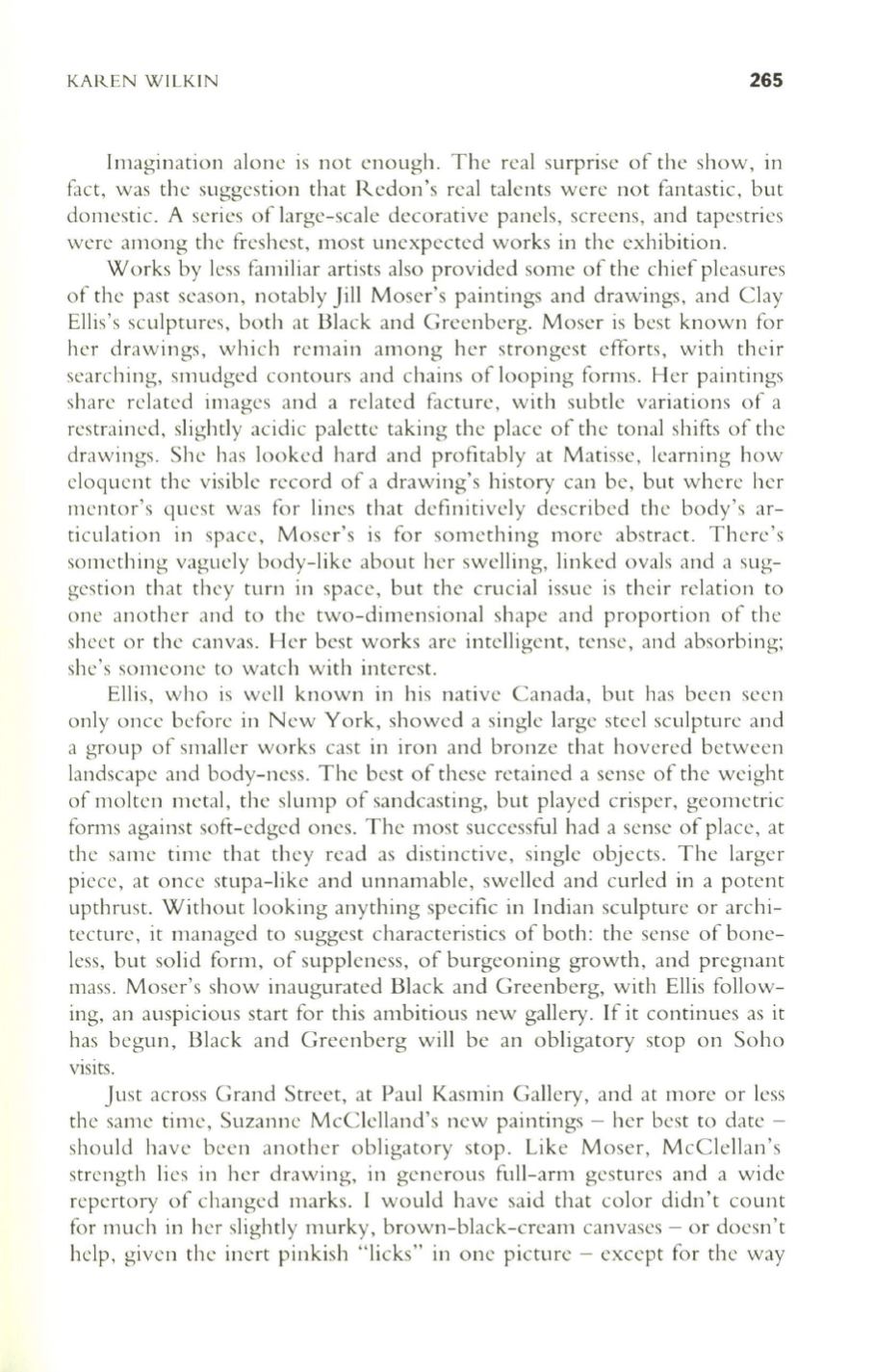
KAREN WILKIN
265
Imagination alone is not enough. The real surprise of the show, in
fact, was the suggestion that Redon's real talents were not fantastic, but
domestic. A series of large-scale decorative panels, screens, and tapestries
were among the freshest, most unexpected works in the exhibition.
Works by less familiar artists also provided some of the chief pleasures
of the past season, notably Jill Moser's paintings and drawings, and Clay
Ellis's sculptures, both at Black and Greenberg. Moser is best known for
her drawings, which remain among her strongest efforts, with their
searching, smudged contours and chains of looping forms. Her paintings
share related images and a related facture, with subtle variations of a
restrained, slightly acidic palette taking the place of the tonal shifts of the
drawings . She has looked hard and profitably at Matisse, learning how
eloquent the visible record of a drawing's history can be, but where her
mentor's quest was for lines that definitively described the body's ar–
ticulation in space, Moser's is for something more abstract. There 's
something vaguely body-like about her swelling, linked ovals and a sug–
gestion that they turn in space, but the crucial issue is their relation to
one another and to the two-dimensional shape and proportion of the
sheet or the canvas. Her best works are intelligent, tense, and absorbing;
she's someone to watch with interest.
Ellis, who is well known in his native Canada, but has been seen
only once before in New York, showed a single large steel sculpture and
a group of smaller works cast in iron and bronze that hovered between
landscape and body-ness. The best of these retained a sense of the weight
of molten metal, the slump of sandcasting, but played crisper, geometric
forms against soft-edged ones. The most successful had a sense of place, at
the same time that they read as distinctive, single objects. The larger
piece, at once stupa-like and unnamable, swelled and curled in a potent
upthrust. Without looking anything specific in Indian sculpture or archi–
tecture, it managed to suggest characteristics of both: the sense of bone–
less, but solid form , of suppleness, of burgeoning growth, and pregnant
mass. Moser's show inaugurated Black and Greenberg, with Ellis follow–
ing, an auspicious start for this ambitious new gallery. If it continues as it
has begun, Black and Greenberg will be an obligatory stop on Soho
visits.
Just across Grand Street, at Paul Kasmin Gallery, and at more or less
the same time, Suzanne McClelland's new paintings - her best to date -
should have been another obligatory stop. Like Moser, McClellan's
strength lies in her drawing, in generous full-arm gestures and a wide
repertory of changed marks. I would have said that color didn't count
for much in her slightly murky, brown-black-cream canvases - or doesn't
help, given the inert pinkish "licks" in one picture - except for the way


